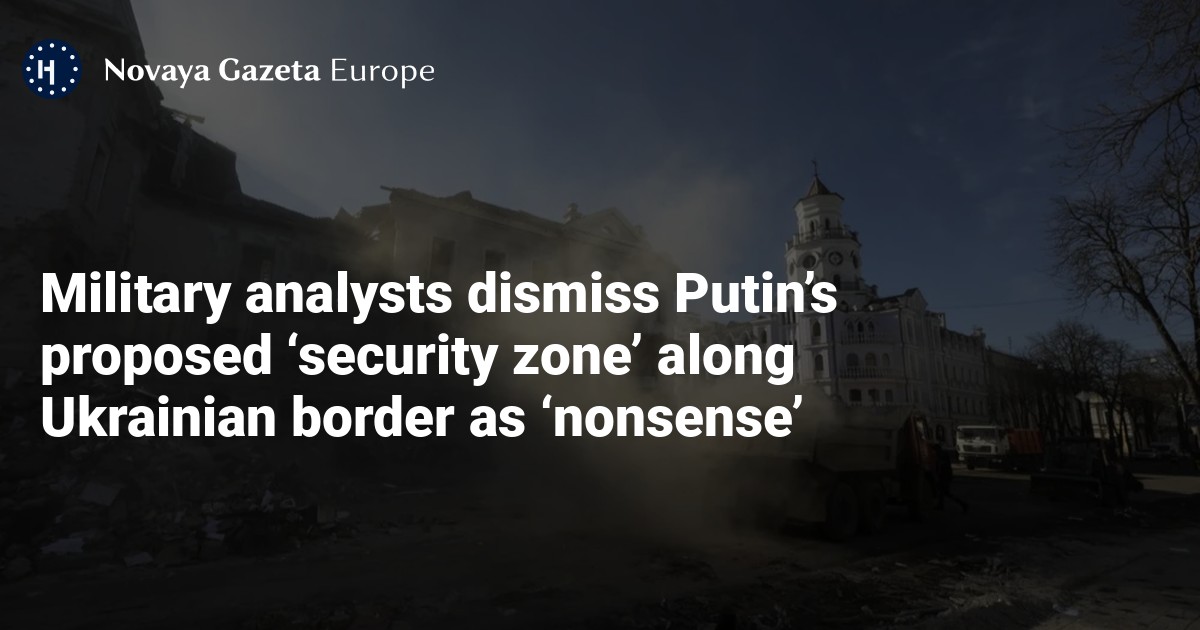




Workers clean debris at the site of a Russian missile strike in Sumy, Ukraine, 15 April 2025. Photo: EPA-EFE/SERGEY KOZLOV
Vladimir Putin announced the creation of a “buffer security zone” along Russia’s border with Ukraine during a televised meeting with government officials on Thursday, according to the Kremlin.
“Our armed forces are now implementing this goal, work is underway,” Putin said after accusing the Armed Forces of Ukraine (AFU) of shelling civilian objects in the Russian border regions of Kursk, Belgorod and Bryansk.
While Putin gave no further details about the “buffer zone”, investigative news outlet IStories pointed out on Thursday that this was the eighth time that Putin had made the suggestion in the past two years. He first threatened to create a “cordon sanitaire” in Ukraine in June 2023, with subsequent promises coming as recently as March.
Military analyst Kirill Mikhailov suggested that Putin’s announcement could be linked to Russia’s offensive in Ukraine’s northeastern Sumy region, as well as attempts to breach the border in the neighbouring Kharkiv region, which he said had “not yet been successful”.
Putin’s vision of a buffer zone is a strip of at least 10 kilometres along the entire Russian-Ukrainian border, Mikhailov said, “but Russian forces don’t currently have the resources both to implement this vision in full” while continuing their offensive in eastern Ukraine.
Ukrainian military analyst Ivan Stupak, for his part, branded Putin’s announcement “nonsense”, noting that the term “buffer zone” was meaningless in the context of modern warfare and long-range weapons, with some modifications of drones capable of flying hundreds of kilometres.
“There can be no talk of a buffer zone. It’s a trick,” Stupak told Novaya Europe, suggesting that Moscow’s plan was to “set up a buffer zone, install a pro-Russian administration, then declare the area Russian. And then that area also needs a cordon sanitaire or buffer zone. And then the game starts all over again, at the next level.”
